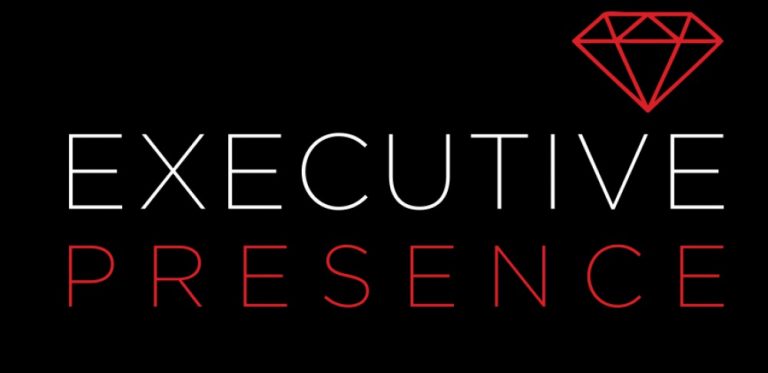A question I often get from many of my clients is, “how can I strengthen my executive presence?” Some think it’s a hidden gem that only certain leaders can develop. Others believe it is an innate skill that only few possess. In my experiences with executives ranging from CEOs down to entry-level managers, I’ve found that executive presence is a competency. Like any other leadership competency, people can learn how to develop the capability. It takes some effort on the part of the leader, but with practice, any leader can strengthen their executive presence.
Research on executive presence has been around for many years. With the emergence of emotional intelligence over the last 20 years, the focus on has shifted to the social and emotional realm, but there is a strong correlation between these skills and executive presence. For an in-depth look at the different models of emotional intelligence, I would recommend the Ackley (2016) article from the most recent edition of Consulting Psychology Journal: Practice and Research (Dec, 2016). Ackley provides a summary of alternative models and measures of emotional intelligence and their associated competencies, behaviors, traits. In reviewing these areas, one can quickly see that many of the behaviors relate to the development of better executive presence. However, greater social and emotional intelligence is not enough. Leaders need to a cultivate certain capabilities that will enhance their presence with others. Below are the eight areas that will help you improve your executive presence.
- Confidence: Confidence is built through experience. Positive and negative experiences shape the degree of confidence in our personal capabilities. Smart leaders learn from good and bad experiences. They take lessons learned and try to avoid making the same mistakes twice. Confidence begins to take shape at an early age. It is built through academics, sports, and social endeavors. Leaders that exude confidence have a vast repertoire of experiences to draw from, which helps them have confidence in future endeavors. This is the first key to executive presence; having the confidence in self based upon life experiences.
- Humility: Humble leaders thrive. I’ve written on this topic before https://www.linkedin.com/pulse/humble-leaders-thrive-adam-c-bandelli-ph-d-?trk=mp-reader-card. Leaders that are humble do not try to put on a show for others. They know their strengths and areas of opportunity. They look to partner with and learn from others. A large component of executive presence is understanding how to read a room, and then engaging in the appropriate manner. Humble leaders do this with exceptional skill. They do not come across as cocky or arrogant to colleagues, and this helps to ingratiate themselves with others.
- Appearance: We all know the motto – dress for success. It’s a timeless saying because it is always applicable to creating first impressions and establishing rapport with others. How we dress and look matters! Some helpful hints: never were a checkered dress shirt or tie with a striped suit. In fact, try not to wear striped suits at all! Black belt with black shoes. Brown belt with brown shoes. Most importantly (I learned this the hard way early in my career), know your audience and dress appropriately. You don’t need a three-piece suit for a company offsite where most people are wearing polo shirts and sports coats!
- Emotional Intelligence (EI): I touched on EI in my introduction. The capacity for recognizing our own feelings and those of others, for motivating ourselves, and for managing emotions effectively in ourselves and others is critical to executive presence. Managing impressions and gauging the temperature in a room involves using good EI. People that leverage their EI capabilities are able to understand the perspectives of others and adjust their leadership style depending on the situation at hand. There are many ways to assess and develop EI. Ackley (2016) outlined the three most popular EI psychometric assessment tools. We recommend the Bandelli Social and Emotional Intelligence Inventory™, which focuses on four critical social and emotional intelligence competencies https://www.bandelliandassociates.com/bandelli-leadership-skills-inventories/bandelli-social-and-emotional-intelligence-inventory.
- Political Skill: Political skill is the ability to effectively understand others at work, and to use such knowledge to influence people to act in ways that enhance one’s organizational and/or personal objectives. Ferris (2005) and colleagues (Journal of Management, 30(1), 126-152) outlined the four dimensions of political skill. These dimensions include: a) social astuteness – making astute observations of others and being keen to diverse social situations; b) interpersonal influence – using a subtle and convincing personal style that exerts influence on others; c) networking ability – developing and using a large network of colleagues and coworkers; and d) apparent sincerity – appearing to possess high levels on integrity, authenticity, trust, and genuineness. All of these factors play a role in executive presence. Leaders with strong executive presence can read the verbal and nonverbal signals in social situations. They can influence people with or without authority. They are consistent in developing and using their network. They come across as genuine and sincere.
- Courage: Leaders with strong executive presence have the courage of their convictions. They know when to listen and when to press a point with colleagues. They are guided by strong values and beliefs, and do not let others take advantage of them or the organization. They hold people accountable to commitments. They stand up for what is right even in situations where the right thing to do is not the most popular course of action.
- Impression Management: Perception is reality. We are always managing the impression we leave on others. From personal appearance, to interpersonal mannerisms, to verbal and nonverbal cues, people are always taking in information that helps them shape a better perspective about you. Depending on the type of data we provide people with will determine how they view us. So, impressions are everything. Leaders with strong executive presence know how to leave a lasting, positive impression.
- Swagger: Swagger is not cockiness or arrogance. It is the way we carry ourselves day-in and day-out. It’s highly correlated with confidence and charisma. Leaders with swagger have an air about them. They know how to make every person that they come into contact with feel valued and respected. Swagger is contagious. When a leader has confidence in their capabilities, and those of the people around them, it empowers others to perform above expectations. You can develop swagger by strengthening your self-confidence, reflecting on your past successes, and striving to have a positive influence on others.
Executive presence is not some allusive trait that is only gifted to a few. It is learned behavior that can improve with practice. Follow the eight areas outlined above and you will be well on your way to cultivating strong executive presence.
Adam C. Bandelli, Ph.D. is the Managing Director of Bandelli & Associates, a boutique consulting firm focusing on leadership development and organizational effectiveness.
Leadership Matters. Without It, People Fail.


